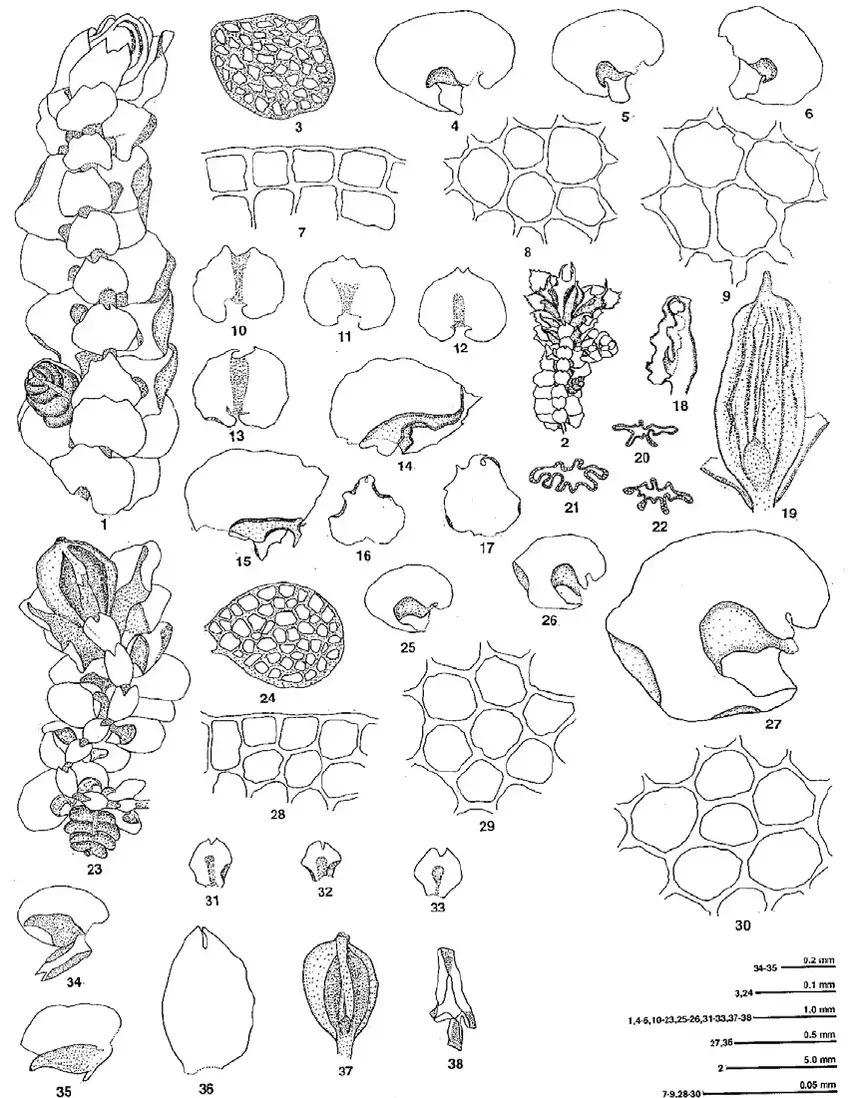
Frullania-wallichiana-Mitt-1-22-LWG-207967-A-1-Plant-ventral-view-2-Fertile.png from: https://www.researchgate.net/figure/Frullania-wallichiana-Mitt-1-22-LWG-207967-A-1-Plant-ventral-view-2-Fertile_fig1_268181044
Exploring the Fascinating World of Frullania socotrana Mitt. Moss
Introduction
Mosses are often overlooked, but they play crucial roles in ecosystems around the world. One particularly interesting species is Frullania socotrana Mitt., a moss in the Frullaniaceae family. In this blog post, we’ll take a closer look at this fascinating plant, from its unique morphology to its ecological importance. Get ready to dive into the tiny but mighty world of Frullania!
Background
Frullania socotrana Mitt. is a species of leafy liverwort, which are non-vascular plants in the division Marchantiophyta. Liverworts are similar to mosses but have a few key differences. Frullania belongs to the order Jungermanniopsida, which contains most leafy liverworts. The species name “socotrana” refers to the island of Socotra, located off the coast of Yemen, where this moss was first discovered.
Morphology and Identification
Frullania socotrana has a distinctive appearance that sets it apart from other mosses. Its leaves are arranged in three rows and are deeply divided into lobes. The underleaves (modified leaves on the underside of the stem) are much smaller than the lateral leaves. Frullania species often have water sacs called lobules on the lower surface of their leaves, which help with water retention in dry environments. The lobules of F. socotrana are helmet-shaped.
Global Distribution and Habitat
While originally described from Socotra, Frullania socotrana has since been found in other parts of the world, including Africa, Asia, and South America. It typically grows on the bark of trees (epiphytic) in humid forests, but can also be found on rocks (epilithic) in some areas. This wide distribution suggests that F. socotrana has effective dispersal methods, likely via spores carried by wind or animals.
Ecological Roles and Adaptations
Like other mosses, Frullania socotrana plays important roles in its ecosystem:
- Water retention: The lobules and mat-like growth form help retain water, providing moisture for the moss and other organisms during dry periods.
- Habitat for micro-organisms: The complex structure provides microhabitats for various invertebrates and micro-organisms.
- Nutrient cycling: As part of the decomposition process, Frullania helps recycle nutrients back into the ecosystem.
F. socotrana has several adaptations that allow it to thrive in its environment, including desiccation tolerance (ability to survive drying out), efficient water and nutrient uptake through its leaves, and the ability to reproduce asexually via fragmentation.
Conclusion
Frullania socotrana Mitt. may be small, but it is a remarkable moss with a fascinating biology and important ecological roles. From its unique morphology to its global distribution, F. socotrana showcases the incredible diversity and resilience of mosses. Next time you see moss growing on a tree or rock, take a closer look – you might just be looking at a miniature world waiting to be explored! What other secrets do you think these tiny plants hold?